Google Pixel 6a vs. Pixel 6: What are the differences?
How does the Pixel 6a face up to the original Pixel 6?
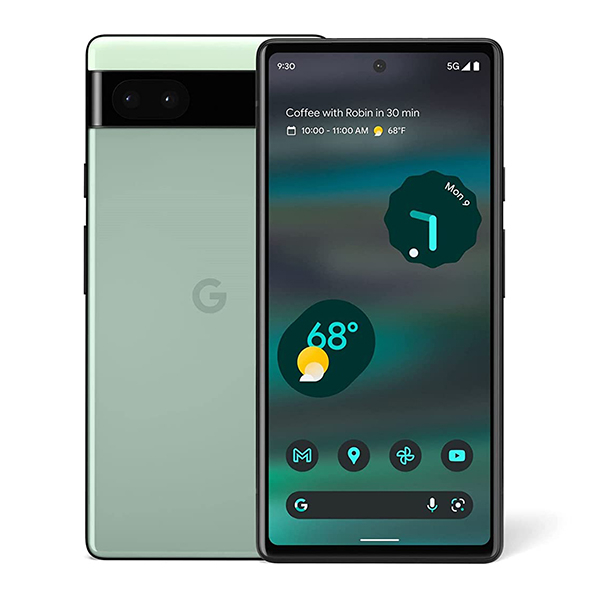
Google's cheapest phone produces some of the best photos of any phone, let alone under $500. It's small, but still offers a bright display and a powerful Tensor chip. It has the same mediocre battery life from the Pixel 6 though, and you can feel from the cheaper materials that it isn't quite as good as its premium siblings.
Pros
- Excellent photos, especially from a sub-$500 phone
- Bright display
- Compact size for a phone with a 6.1-inch screen
- Tensor-powered capabilities at a lower price than the Pixel 6
Cons
- Poor performance on our battery test
- Cheaper materials than the Pixel 6

Google transformed the Pixel series into a series Samsung challenger with the Pixel 6, particularly with its new, lower starting price. Photography's just as good as ever, but Google really could have done with working on power efficiency some more.
Pros
- Tensor chip adds smarts to the phone
- Excellent photo-editing features
- Android 12 is a welcome update
- Unique design
- Great price
Cons
- Slow fingerprint sensor
- Battery life can be short over 5G
- Some color issues with photos
A GooglePixel 6a vs. Pixel 6 comparison isn’t about finding which Google handset is the better device — even though they share many features, the Google Pixel 6 is superior. Rather, you compare the two devices to see just what you’re giving up for the Pixel 6a’s lower price tag.
Our Google Pixel 6a review found a device that’s the best in its price range, making it one of the best cheap phones you can buy. Best of all, the Pixel 6a features the same Tensor processor that powers the Pixel 6, so the drop-off in performance between Google’s flagship and its budget offering shouldn’t be too big.
But what trade-offs will you have to make if you opt for the Pixel 6a’s cheaper price? That’s the point of this Google Pixel 6a vs. Pixel 6 face-off, as we take a closer look at what the phones have in common and what’s different about them. That way, you can decide whether the budget Pixel 6a offers a good value or if you’re better off with one of Google’s flagship phones.
Google Pixel 6a vs. Pixel 6: Specs
| Row 0 - Cell 0 | Pixel 6a | Pixel 6 |
| Starting price | $449 | $599 |
| Screen size | 6.1-inch OLED | 6.4-inch OLED |
| Refresh rate | 60Hz | 90Hz |
| CPU | Google Tensor | Google Tensor |
| RAM | 6GB | 8GB |
| Storage | 128GB | 128GB, 256GB |
| Rear cameras | 12.2MP main, 12MP ultrawide | 50MP wide (f/1.85), 12MP ultrawide (f/2.2) |
| Front camera | 8MP | 8MP (f/2.0) |
| Battery size | 4,410 mAh | 4,614 mAh |
| Battery life (Hrs:Mins) | 6:29 | 8:13 |
| Wired charging speed | 18W | 30W |
Google Pixel 6a vs. Pixel 6: Price and availability
Just $150 separates the Pixel 6a from the Pixel 6, and finding out what that extra $150 buys you is the key to determining which phone is worth it to you.
Of course, the $599/£599/AU$999 starting price for the Pixel 6 seems to have dropped recently, as Google gets closer to this fall’s Pixel 7 launch. At the moment, you can buy the Pixel 6 for $499 from Google, bringing its price to just $50 more than the Pixel 6a. Additional savings can be had with the best Pixel 6 deals.
Meanwhile, you can still buy the Pixel 6a for $449/£399/AU$749. Some carriers charge a little bit extra — the phone costs $499 at Verizon, for example, as the Verizon version of the Pixel 6a is specially tailored to work with Verizon’s fast 5G network. Check out the best Pixel 6a deals to see if you can save on Google’s latest phone.
Like the Pixel 6, the Pixel 6a features 128GB of storage, but that’s the only configuration for the budget device. There’s also a 256GB version of the Pixel 6 for an extra $100 over the base model.
Get instant access to breaking news, the hottest reviews, great deals and helpful tips.
Unlike last year’s Google Pixel 5a, you can find the Pixel 6a in the U.K. as well as other other users outside of the U.S. and Japan. That means the Pixel 6a is about as easy to find as the Pixel 6.
Google Pixel 6a vs. Pixel 6: Design
The Pixel 6 established Google's new design language for its phones, with a big camera bar stretching across the width of the phone on the backside. Up front, there’s a flat display with a central punch-hole camera and under-display fingerprint sensor.

The Pixel 6 established Google's new design language for its phones, with a big camera bar stretching across the width of the phone on the backside. Up front, there’s a flat display with a central punch-hole camera and under-display fingerprint sensor.

For colors, you have the choice of Stormy Black, Sorta Sage or Kinda Coral on the Pixel 6. On the Pixel 6a, you can have Charcoal, Chalk or Sage paint jobs. Neither phone comes with extensive color options, but the Kinda Coral device is the most eye-catching of the different Pixel 6 colors.
Google Pixel 6a vs. Pixel 6: Display
Here’s another Google Pixel 6a vs. Pixel 6 difference — screen size. The Pixel 6 stands at 6.4 inches, while the Pixel 6a is a bit smaller at 6.1 inches. You’ll notice the slightly taller screen on the Pixel 6 when you stack up Google’s phones side by side.
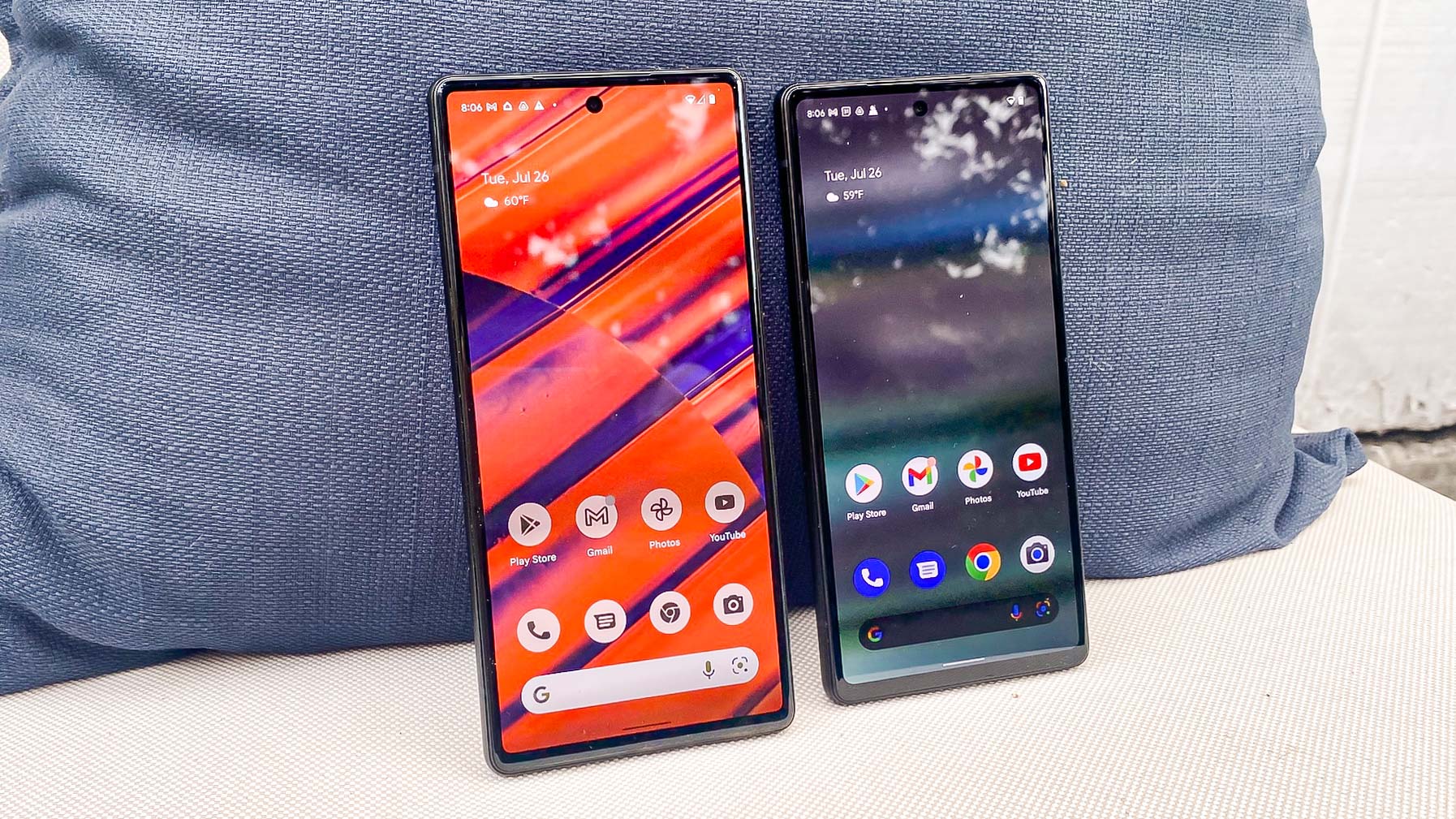
The displays also use different materials. The Pixel 6 uses Gorilla Glass Victus, currently some of the toughest available glass for smartphones around. The Pixel 6a uses the older Gorilla Glass 3, which is still much stronger than regular glass, but it may scratch and break more easily than what you get on the Pixel 6.
Finally, the refresh rates differ. The Pixel 6a has a basic 60Hz refresh rate, while the Pixel 6 uses a smoother 90Hz display. Other than that, the two share the same underlying OLED technology and FHD resolution. (Note that there is a secret hack to unlock a 90Hz display on the Pixel 6a.)
Of the two phones, the Pixel 6a has the more colorful display, showcasing 111.1% of the sRGB color spectrum in its Natural setting vs. 100.9% for the Pixel 6. Colors are more accurate, too, with the Pixel 6a’s Delta-E score of 0.2 besting the 0.28 result for the Pixel 6. (The closer the numbers are to zero, the more accurate the colors.) However, the Pixel 6 offers the brighter of the two screens, reaching 843 nits when measured with a light meter; the Pixel 6a topped out at 778 nits.
Google Pixel 6a vs. Pixel 6: Cameras
At least on paper, there's a few similarities between the Pixel 6 and Pixel 6a camera arrays. Both phones use the same 12MP ultrawide camera on the back and 8MP selfie camera on the front. The sole difference here is the main camera sensor, which is 50MP on the Pixel 6 and 12.2MP on the Pixel 6a. In theory, that means a detail and brightness advantage for the Pixel 6's shots.
At least on paper, there's a few similarities between the Pixel 6 and Pixel 6a camera arrays. Both phones use the same 12MP ultrawide camera on the back and 8MP selfie camera on the front. The sole difference here is the main camera sensor, which is 50MP on the Pixel 6 and 12.2MP on the Pixel 6a. That could result in a detail and brightness advantage for the Pixel 6's shots.
In real-world testing, the differences are less clear. The Pixel 6a’s shot of an apple tree is better balanced than what the Pixel 6 produced, with the more expensive Google phone favoring a darker cast to the picture. The apples not only look brighter in the Pixel 6a’s shot, but the white wall behind the apple tree is better balanced as well.
Similarly, this photo of a duck leg served on a bed of chard with some potatoes looks good no matter which Google phone shot it. You can argue that the Pixel 6a did a better job reflecting the light in its photos, so that the chard beneath the duck glistens more. But the crispiness of the duck skin comes across in both photos, which speaks well of the Pixel 6a’s photo-processing powers.
Where the Pixel 6 stands out is when you use the features more dependent upon Google’s computational photography. This portrait shot looks sharper in the Pixel 6 version, as Google’s flagship phone did a better job of separating my daughter from the background behind her. Wisps of hair on the left side of the shot remain in focus for the Pixel 6, while they get caught up in the Pixel 6a’s blur.
Night shots are more evenly balanced between the two phones, though I think the Pixel 6 enjoys a slight edge. The colors on the pink stuffed animal are just a little bit more true to life in the Pixel 6 photo, and the shadows cast on the pillows look richer. I do like the shimmer of light in the glass of bourbon that the Pixel 6a manages to capture.
As for photography tricks, both the Pixel 6 and Pixel 6a offer things like Magic Eraser to remove unwanted parts of an image or face un-blurring to restore detail to moving people's visages. Google showed off a new Magic Eraser feature with the Pixel 6a that allows you to recolor objects to make them less distracting without removing them, but this feature has come to the Pixel 6 via a software update.
Google Pixel 6a vs. Pixel 6: Performance and 5G
Google surprised us last year by unveiling the proprietary Google Tensor chipset for the Pixel 6 series. And now this chip has come to the Pixel 6a, offering flagship-grade performance in a cheaper device.
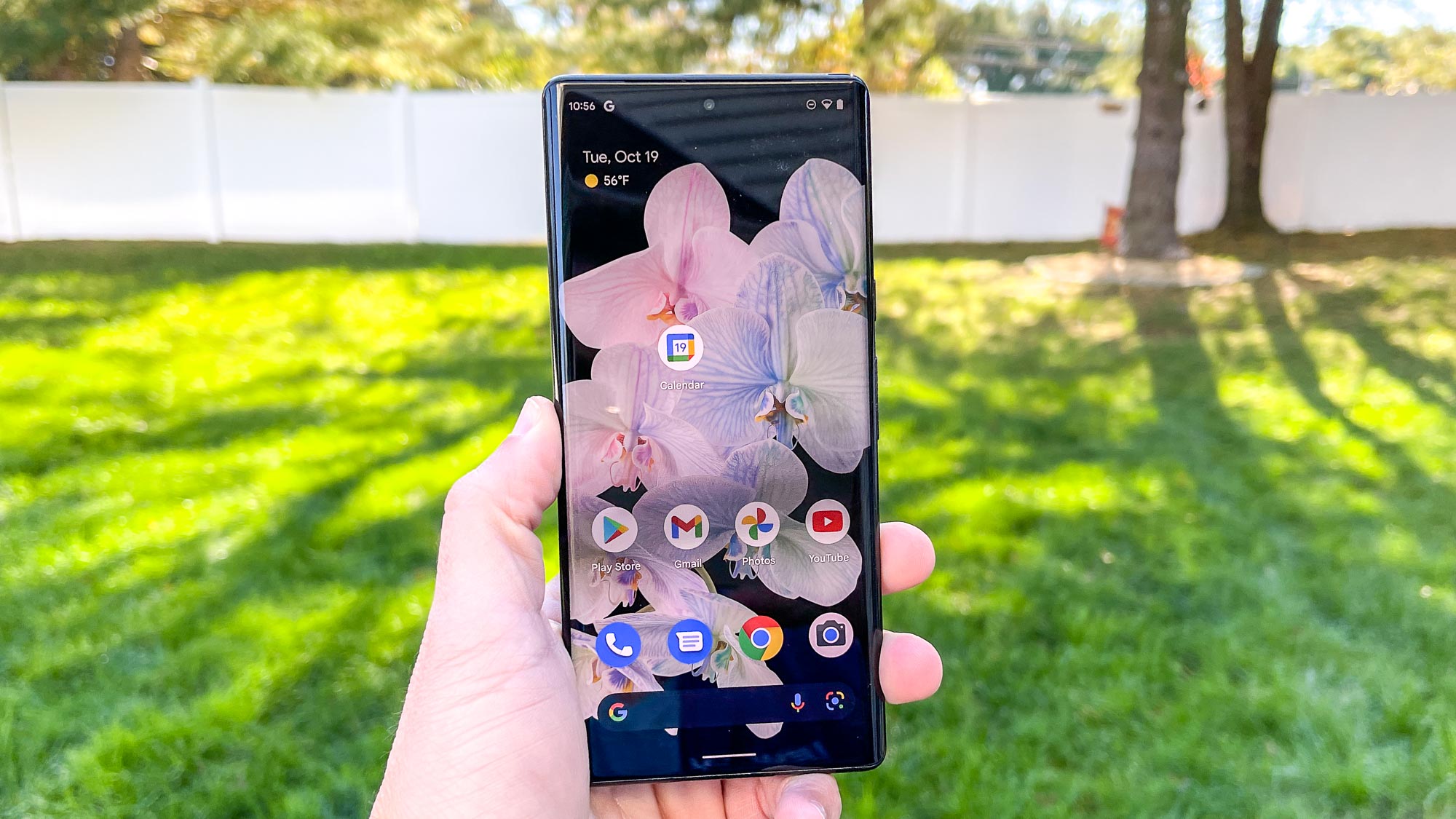
Well, almost. The Pixel 6a offers less RAM (6GB) than the Pixel 6 (8GB), which you expect might account for any variance in test numbers, particularly when it comes to multitasking or switching between apps. However, when we ran Geekbench 5 on both phones, the Pixel 6a posted slightly superior numbers in both single core (1,057 vs 1,029) and multicore (2,918 vs. 2,696) tests.
The gap was even wider in graphics testing, with the Pixel 6a’s 41.7 frames per second result in 3DMark’s Wild Life Unlimited test beating out the Pixel 6’s 34.3 fps result. The two phones took the same 49 seconds to transcode a 4K video in Adobe Premiere Rush.
The bottom line? Performance on the Pixel 6a is comparable to the Pixel 6 (if not a hair better). This is one area you’re not going to compromise on, if you turn to the less expensive Google phone.
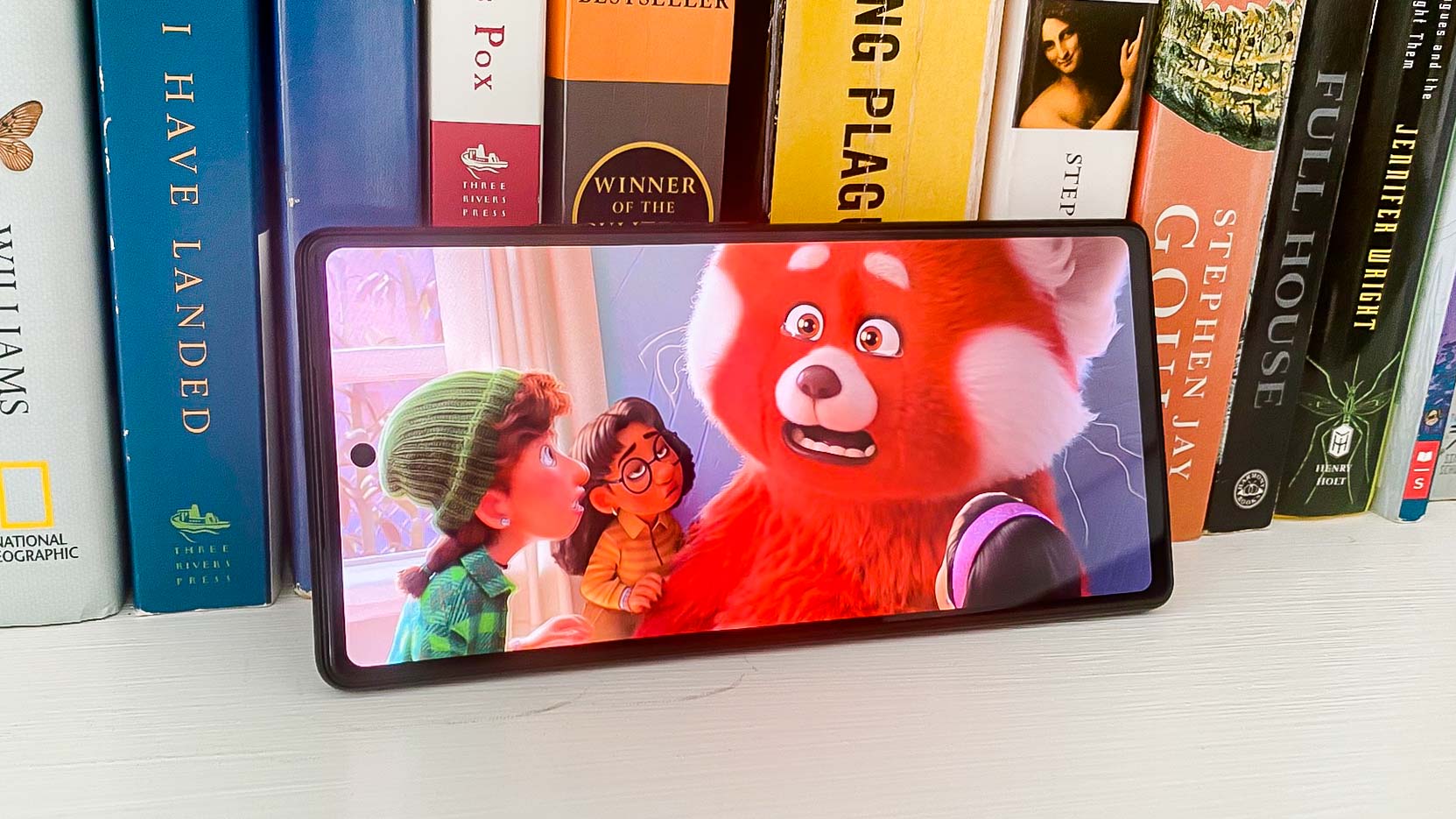
For 5G, both the Pixel 6a and Pixel 6 offer sub-6GHz 5G by default, with mmWave on offer on certain models. Getting access to mmWave may cost you extra (an extra $50 for the 6a on Verizon, as we mentioned).
Google Pixel 6a vs. Pixel 6: Battery and charging
You'll find a 4,616 mAh battery in the Pixel 6 were you to take it apart. In the Pixel 6a, it's a 4,410 mAh cell. Neither one produces great numbers on our battery test, in which we have phones surf the web over cellular until they run out of power. Unfortunately, that’s been the trend as of late with many Google phones.
With its 90Hz refresh rate enabled, the Pixel 6 turned in a time of 8 hours and 13 minutes on our battery test, which is about 90 minutes behind the average smartphone’s result. (That Pixel 6 result came when we tested the phone over 5G; a second test on a different cellular network where only LTE was available produced a better result, though we attribute that to the Pixel 6’s older modem.)
The Pixel 6’s below-average battery life looks positively impressive next to the Pixel 6a. Google’s budget phone died just shy of the 6.5-hour mark — nearly two hours behind Google’s flagship.
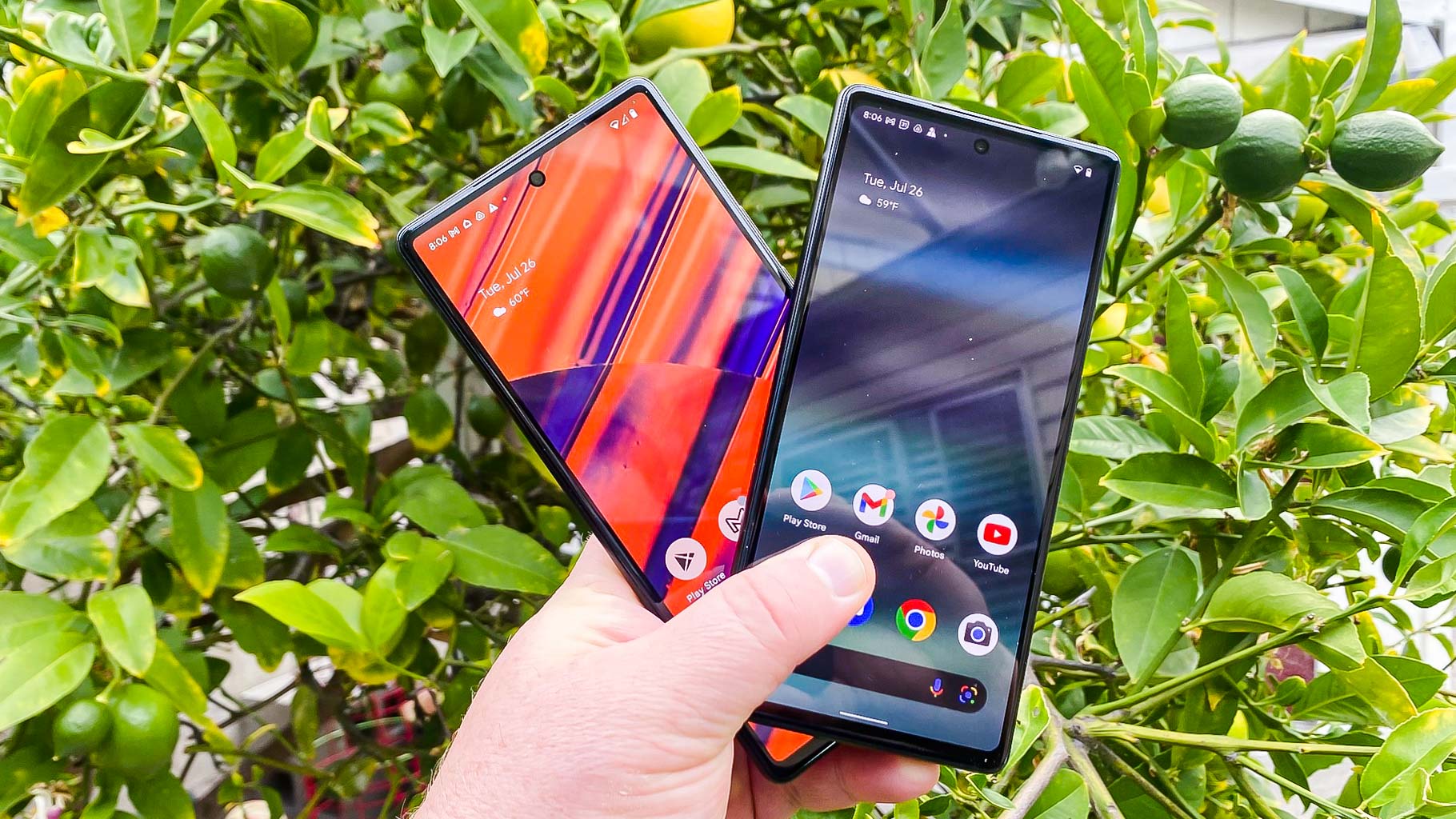
In real world use, battery life wasn’t that bad, but neither the Pixel 6 nor the Pixel 6a qualify as long-lasting devices worthy of a spot on our best phone battery life list.
You can charge the Pixel 6 at up to 21W with a wired charger. The Pixel 6a keeps the old 18W standard of the Pixel 5a, which is about what we'd expect from a phone of this price. Wireless charging remains a Pixel 6 exclusive.
Google Pixel 6a vs. Pixel 6: Software
The Pixel 6 and Pixel 6a both debuted with Android 12, though like all Pixel phones, they can now run the newly released Android 13.
Google promises five years of security support for the Pixel 6, keeping that commitment for the Pixel 6a. In terms of software updates, you can expect three years for both phones.
Google Pixel 6a vs. Pixel 6: Outlook
The Pixel 6a does a good job taking the core features of the Pixel 6 and adding them to a phone that costs a little bit less. The things that truly matter in a phone — overall performance and camera capabilities — are no different on the Pixel 6a than they are on the Pixel 6. Google’s cheaper phone also benefits from the presence of the Tensor chip, which enables the smart features Pixel 6 owners enjoy.
About the biggest Google Pixel 6a vs. Pixel 6 differences involve the screen size (it’s bigger on the Pixel 6), battery life (it’s better on the Pixel 6 and quality of materials. If you can live without what the Pixel 6 offers there, you can be very happy with the Pixel 6a.
Of course, at this stage, the real concern isn’t what the Pixel 6 offers — it’s what the upcoming Pixel 7 shows off. Google also really only told us to expect a new version of the Tensor silicon, which could enable new software features beyond the Pixel 6a’s powers. Until then, though, the Pixel 6a is pretty comparable to the Pixel 6, making it a fine option for bargain-hunting smartphone shoppers.
Philip Michaels is a Managing Editor at Tom's Guide. He's been covering personal technology since 1999 and was in the building when Steve Jobs showed off the iPhone for the first time. He's been evaluating smartphones since that first iPhone debuted in 2007, and he's been following phone carriers and smartphone plans since 2015. He has strong opinions about Apple, the Oakland Athletics, old movies and proper butchery techniques. Follow him at @PhilipMichaels.
- Richard PridayAssistant Phones Editor

